[Editor’s Note: Combat veteran and amateur military historian Charles Herrick’s crucial earlier posts in this series corrected 70 years’ worth of miscaptioning of one of Robert Capa’s ten D-Day photographs from Omaha Beach, and pinpointed the exact location and approximate time at which he landed on the Easy Red sector with a later wave.
In this new article, Herrick considers a sampling of what he calls “parasitic legends” that have built on and attached themselves to the primary Capa D-Day myths as seeded and expanded upon by Capa, John Morris, and others.
Somewhere along the line during the course of this investigation I coined the term “borrowed glamour” — intended as a milder corollary of the more familiar “stolen valor” — to describe the less objectionable but still problematic tendency to exaggerate or invent entirely one’s relationship to celebrated individuals, historical moments, etc. Herrick has adopted that as the title for this series of posts.
Part 2 appears below; click here for Part 1. Part 3 will appear shortly. — A.D.C.]
•
Borrowed Glamour (continued)
by Charles Herrick
•
A Priest, a Jew and a Hungarian Walk into a War
“Borrowed glamour” can work both ways. Robert Capa was extremely successful in avoiding almost every verifiable detail in both of his own published D-Day accounts (the first in an interview conducted by LIFE correspondent Charles Wertenbaker for his book Invasion!, the second in Capa’s own memoir). Although the later Slightly Out of Focus narrative was bloodier and more prone to hyperbole, it actually omitted the one verifiable detail in his earlier Invasion! version: the time his landing craft was lowered into the water. No doubt this was because that detail put the lie to the “first wave” myth he included in that later account.
It’s strange, then, that out of the host of men Capa encountered aboard the USS Samuel Chase, then in his landing craft, and finally on the beach, he only identified three, all of whom were absent from his original Invasion! account but appeared in his later Slightly Out of Focus account: Colonel George Taylor, the Jewish doctor, and the Irish priest. These three were perhaps the most popular characters in the regiment, and in Capa’s revised account he crafted the tale so as to associate himself with all three.
Colonel Taylor supposedly took time from his cares and chores on the eve of the critical battle to seek out the photographer and offer him a relatively safe landing billet in Wave 13.[1] In reality, the regimental landing tables prove Capa had been slotted in exactly that position three weeks before the invasion.[2] A junior staff officer would have already directed Capa to that slot before the ship left Weymouth to make the crossing; it would not have been an optional offer left to the commanding officer to discuss, nor would it have been left to the last few hours before loading the landing craft.
But this invention served to enhance Capa’s image, furthering the idea that he was so famous that the brass worried about his safety. It also offered a plot device whereby Capa could demonstrate his bravery by turning down the safe slot and opting for the most dangerous slot. Which of course is another bit of fiction, as the vast preponderance of evidence points to Capa landing in Wave 13, just as the landing tables dictated.
In Slightly Out of Focus Capa stated that, upon reaching the “shingle” (an embankment on the beach that provided some shelter from enemy fire), he encountered the regiment’s Irish priest and Jewish doctor, whom he described as old friends. If Capa did encounter them at the shingle, it would go a long way to prove he did make it that far ashore, for there is no other evidence he got to the shore. In Capa’s account they shared cigarettes and drinks from Capa’s flask while sheltering there.[3]
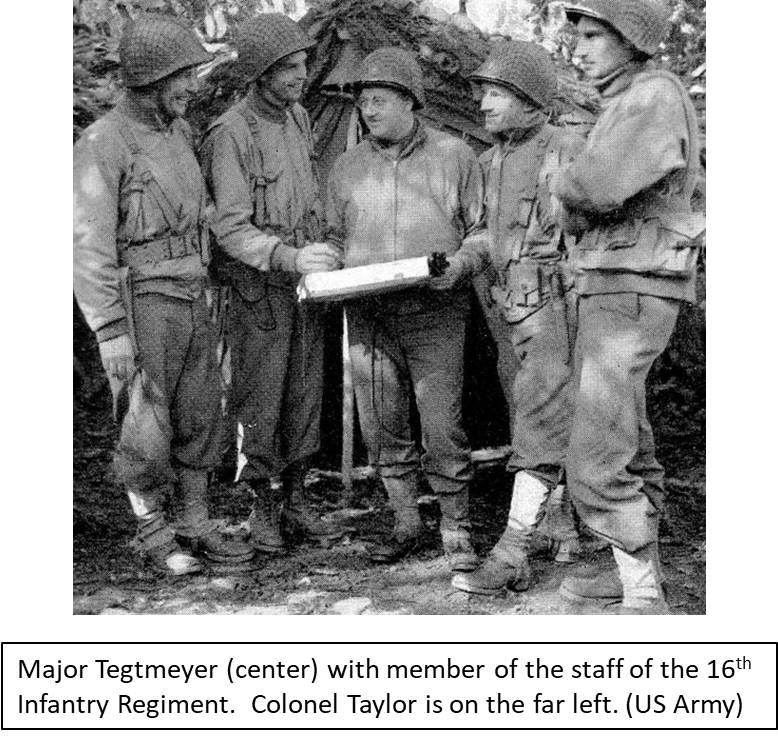
•
The Irish priest was First Lieutenant Lawrence Deery, the highly colorful and popular regimental chaplain. The Jewish doctor was Major Charles E. Tegtmeyer, the regimental surgeon, who ended the war as one of the most highly decorated members of the Medical Corps. These two men had also come in on Wave 13 in the LCM that accompanied Colonel Taylor’s smaller LCVP. (A “landing craft mechanized” — LCM — is capable of carrying somewhat larger vehicles than an LCVP.) By staging this scene at the shingle, Capa appeared to be establishing a case that he did set foot on dry land.
Unfortunately for Capa, Major Tegtmeyer kept a diary during the war, which he eventually published. His terse account made no mention of banter with Capa at the shingle, nor did it mention sharing a drink from Capa’s flask. In fact, he didn’t mention encountering his “chum” (Capa’s term) the world-famous photographer at all, although he did note his own interactions with his friend Chaplain Deery at numerous points that day.
Further destroying his own credibility on this anecdote, Capa claimed that “the Irish priest and the Jewish doctor were the first to stand up on the ‘Easy Red’ beach.” This the humble Tegtmeyer also disproved, stating that
“Colonel George A. Taylor, the Regimental Commander, had landed fifty yards to the right of us. He passed us walking erect, followed by his staff and yelled for me to bring my group along.”[4]
Had he actually been on the scene, Capa could not possibly have seriously thought that, two hours after the invasion began, the first men to stand up on the beach were this chaplain and doctor. It’s an absurd proposition, indicating that he had no idea what was happening at the shingle and must not have reached that point. One is tempted to believe Capa bestowed this false honor on the two men in hopes that they would in turn corroborate his presence at the shingle. If that was the case, Tegtmeyer disappointed him.
•
Charles Jarreau and LCI(L)-94
Charles Jarreau was a crewman on LCI(L)-94, which was supposed to have beached in the neighboring 116th Infantry Regiment’s half of Omaha Beach. The ship diverted to Easy Red to drop its load of troops and became the ship on which Capa fled the beach.
Decades after the war, Jarreau gave an interview to historian Stephen Ambrose, author of what many consider the definitive history of D-Day. As with many such interviews, it suffered from memory lapses. The biggest problem, however, is that only a portion of this interview survives, ranging from pages 16 to 45, and even then eleven pages are randomly missing within that range. Despite this, Jarreau’s narrative provides some helpful context concerning the ship’s operations on D-Day.
The problem with Jarreau’s interview does not so much involve his memories but rather how it has been misused by others over the years. When Ambrose quoted Jarreau in his book on D-Day, the author moved LCI(L)-94 from Wave 11 (0740 hours/H+70 per the 116th Infantry’s landing tables) to “the first wave, right behind the Navy demolitions team and the beach marking crew.”[5] The ship’s passengers had also been changed from the engineer, medical and MP units it did carry to a fictional load of infantrymen.[6]
As it pertained to the Capa myth, Ambrose invented the detail that it was Jarreau who spotted Capa in the water. In fact, Jarreau’s duty station was below deck at the extreme aft (rear) of the ship, the location of the emergency steering station; Jarreau clearly stated this in his interview[7], but it somehow got omitted by the time Ambrose’s book made it to print. At best, Jarreau stated, he could merely poke his head through a small hatch in the deck at the aft. He was in absolutely no position to see Capa at the foot of the boarding ramp, at the fore of the ship, in the water below the ship’s bow.
So, when Jarreau told Ambrose that “one of the guys we picked up was Frank [sic] Capa”[8], he was speaking in terms of the corporate “we”: his ship picked up Capa. He didn’t mean he personally picked up Capa. Ambrose’s retelling, however, transported Jarreau from his aft steering position to the bow ramp to witness Capa struggling in the water. Worse, eight years later, another author, apparently further interpolating from Ambrose’s exaggerations, asserted that Jarreau personally was “struggling to lift wounded aboard when he spotted Capa.”
So it turns out that the supposed witness to Capa’s coming aboard ship saw no such thing, and whatever details were attributed to his memory were the inventions of historians.
•
Sam Fuller and the USS Henrico
The anecdote that has perhaps most confused the Capa myth also comes from one of the most heavily fictionalized personal accounts of D-Day.
By the time the U.S. entered the war, Sam Fuller had co-writing credit for two Hollywood screenplays and had been given at least partial story credit for five other films. In his autobiography, A Third Face: My Tale of Writing, Fighting and Filmmaking (2002), he claimed that in the wake of the Pearl Harbor attack he volunteered for service, asking only for a delay of a few weeks so he could finish the first draft of a novel. After that short delay, he claimed to have spent five months undergoing training before being assigned to the 1st Infantry Division’s 26th Infantry Regiment and then being shipped to England in August 1942. Less than three months later he landed in North Africa with the Center Task Force as part of Operation Torch on 8 November 1942.
But his discharge record[9] shows almost all of this was not true. Instead of volunteering, he was drafted, and did not enter active service until 7 September 1942, a full nine months after Pearl Harbor. Whatever training he had been given lasted barely a month, as he sailed directly from the U.S. to North Africa with the Western Task Force in October.
After Fuller did eventually join the 26th Infantry, his writing credits brought him to the attention of the aforementioned Colonel Taylor, who was in temporary command of that regiment. When Taylor transferred to command the 16th Infantry, he asked Fuller to come with him, assigning him the duty of recording the unit’s battle experiences. Fuller claimed he refused, wanting instead to fight as an infantryman.
But Fuller did go, was one of the authors of the 16th Regiment’s wartime history[10], and did not fight as an infantryman. He was the regiment’s public affairs corporal,[11] a “ghost” position that did not officially exist. While his autobiography leads the reader to believe he was an infantryman in one of the rifle companies, he was in fact assigned to the regiment’s Service Company,[12] most likely in the staff section, which contained virtually all of the staff officers and enlisted men of the regimental headquarters.
Fuller’s autobiographical inaccuracies continued during his account of D-Day itself. He never mentioned the company he was assigned to or the time of his landing, but the mission briefing he claimed to have received would have put him in the regimental intelligence platoon, which was part of the Headquarters Company. He claimed to have crossed the English Channel on the USS Henrico with the 2nd Battalion, 16th Infantry, and the intelligence platoon did cross on the Henrico, landing with the regiment’s advanced command echelon at 0720 hours/H+50.
But Fuller was not in that platoon and did not cross on the Henrico. His Service Company had no one embarked on the Henrico. Fuller’s account can be discredited at multiple points, but I’ll leave it to Major Tegtmeyer, the regimental surgeon, to settle the matter. After descending from the Chase into the LCM with nearly a hundred other men of the regiment’s rear command echelon on the morning of June 6, Tegtmeyer noted:
“The pitching, rolling and tossing of the craft increased. I watched the top of the landing ramp as it described several 45-degree arcs but it became too much of an effort. I tried looking at the densely packed men standing ahead of me and found myself fascinated by the olive drab color of Cpl. Sam Fuller’s face. Poor Sam, looked as I felt.”[13]
Quite simply, Fuller was aboard the Chase, not the Henrico. But by placing himself with the intelligence platoon on the Henrico, Fuller had managed to claim a landing time an hour earlier than was the actual case.
Our problem, however, is that while aboard the Chase in Weymouth and waiting for the D-Day sortie, Capa took a series of photos of soldiers lounging on deck. At least two of those photos show Fuller napping on a ready ammunition locker. In his book, Fuller incorrectly claimed these photos were taken aboard the Henrico, which, if true, would mean Capa was also aboard the Henrico. It would also mean Capa was on the same ship as Company E, and therefore that it was possible for Capa to have landed with them. Of course none of that was true, but for those die-hards who cling to Capa’s “First Wave With Company E” myth, Fuller’s inaccuracies have become sacred truths. The fact that Capa himself affirmed he was on the Chase, not the Henrico, has had no effect on their delusions. …
•
Notes:
[1] Slightly Out of Focus, p. 137.
[2] Landing Table Index Number 2150, p. 20, Combat Team 16 Landing Tables.
[3] Slightly Out of Focus, pp. 141, 148.
[4] Personal Wartime Memoir of Major Charles E. Tegtmeyer, Medical Corps, Regimental Surgeon, 16th Infantry Regiment, 1st Infantry Division, Chapter XX, p. 5.
[5] Ambrose, D-Day, June 6, 1944: The Climactic Battle of World War II, p. 327.
[6] For landing position and composition of embarked troops, see Landing Table Index Number 1181, p. 27, Combat Team 116 Landing Tables.
[7] Charles Jarreau Oral History, p. 44.
[8] Ibid, p. 40.
[9] Enlisted Record and Report of Separation, Honorable Discharge, Fuller, Samuel L, dated 4 October 1945.
[10] The 16th Infantry, 1796-1946, by LT John W. Baumgartner, 1st SGT Al De Poto, SGY William Fraccio, and PCL Sammy Fuller. The text implies that Fuller had kept the regiment’s journal during his assignment.
[11] CPT Wolf, commander of Co. I, 16th Infantry Regiment, noted in his oral history: “One other incident I forgot to mention is just before crossing a small river or canal — I believe named the Weser — Cpl Sammy Fuller, who was the regiment’s public relations corporal, came down to my company …”
[12] See General Order 132, Headquarters, 1st Infantry Division, dated 24 July 1945, reflecting his assignment to Service Company, 16th Infantry Regiment at the time of D-Day.
[13] Tegtmeyer, Chapter XX, p. 1.
•
Text copyright © 2019 by Charles Herrick. All rights reserved.
•
(For an index of links to all posts in this series, click here.)
•
This post supported in part by a donation from David Wunsch.
•
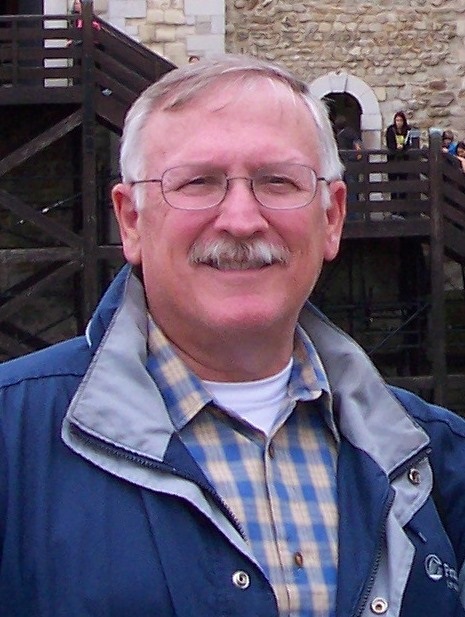 Charles Herrick joined the U.S. Army in 1970 and graduated from the U.S. Military Academy at West Point in 1974. Commissioned in the Infantry, he earned the Ranger tab and Master Parachutist’s wings. He served in a variety of positions from company grade officer to the Pentagon. He earned the Combat Infantryman’s badge while assigned as the Operations Officer of the 193rd Infantry Brigade in Panama in 1989, and later graduated from the U.S. Army War College.
Charles Herrick joined the U.S. Army in 1970 and graduated from the U.S. Military Academy at West Point in 1974. Commissioned in the Infantry, he earned the Ranger tab and Master Parachutist’s wings. He served in a variety of positions from company grade officer to the Pentagon. He earned the Combat Infantryman’s badge while assigned as the Operations Officer of the 193rd Infantry Brigade in Panama in 1989, and later graduated from the U.S. Army War College.
Since retiring from the Army in 1996, Herrick has continued to work on defense issues as a contractor in East Asia, Latin America, the Balkans, Africa and Central Asia. He holds an MBA from the University of California at Los Angeles. He lives in California with his wife, where he pursues his passion for military history. To contact Charles Herrick, click here.


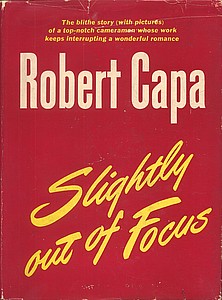
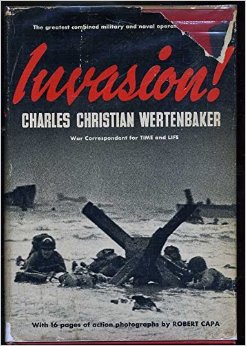
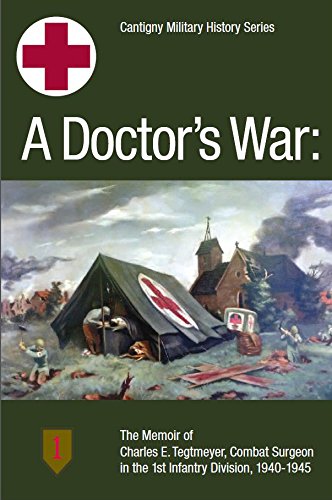
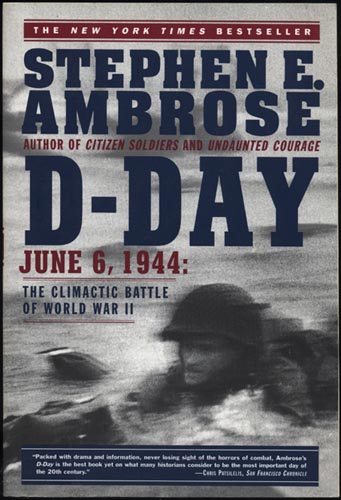

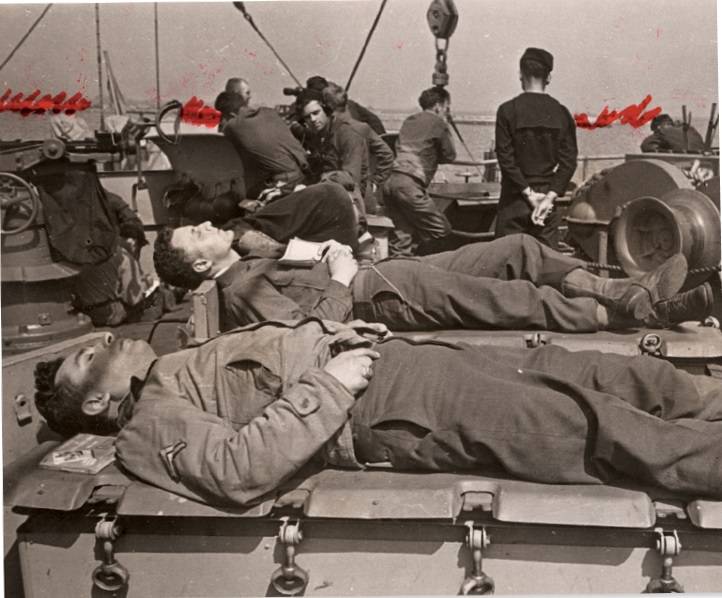




Still, and most importantly, these are some of the war photos ever created.
er… some of the BEST war photos ever created.
Without explaining this estimation, and supporting it in detail, it constitutes nothing more than mere baseless opinionating. And since no combat photographer who covered WWII had a more dedicated promotional effort applied to his or her work for decades, it’s hard to tell when hype overrides the critical faculty.
Useful in this regard to note that Capa’s D-Day images did not achieve any significant acclaim from either photographers or the general public at the time, nor in the decade-plus after the war ended. Only when, circa 1960, his younger brother Cornell began to circulate a touring exhibition with them — complete with the demonstrably fictionalized tale of going in with the first wave and losing the bulk of the images in a darkroom disaster — did anyone celebrate the mostly mediocre “Magnificent Eleven.” Attention to them, and reverence for them, began with his posthumous celebrity, a PR campaign underwritten by Cornell and Magnum Photos and Time/Life.
Mr. Gottschalk: Thank you for taking the time to visit our project and read our columns.
I appreciate your opinion, but must respectfully disagree. Gisèle Freund once said, “The objectivity of a photograph is only an illusion. The captions that provide the commentary can change the meaning entirely.” I fear that is the problem we face with Capa’s landing photos.
So much of the fame of these photos is due to the false tale that they were taken as the first wave landed under murderous fire. They were not. They were taken two hours after H-Hour on a stretch of Omaha Beach which was relatively lightly defended.
Motion-picture film taken of the very same area at the same time (by Coast Guard Chief Photographer’s Mate Ruley from the beached LCI(L)-94) provide an entirely different — and more accurate — context to Capa’s photos.